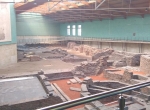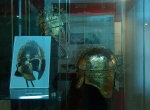Conference in Ruma (Serbia) 4-7.11.2015
2015.11.12 -
The subject of the 27th conference from the Grundprobleme der frühgeschichtlichen Entwicklung im mittleren Donauraum series held 4-7 November were “boundary terms” such as: “Late Roman”, “Early Christian”, “Early Byzantine”, categories used in the historic-archaeological research addressed on the Middle Danube region in the period 4th to 8th c. AD.
The Conference held in Ruma, Vojvodina (Serbia), was organized by the Centre for the History and Culture of East Central Europe of the University in Leipzig (Orsolya Heinrich-Tamaska, Daniel Syrbe) and the Archaeological Institute in Belgrade (Vujadin Ivanišević and Ivan Bugarski) at the initiative of archaeology institutes of the Austrian Academy of Sciences, University of Vienna, Czech Academy of Sciences and Slovak Academy of Sciences. The conference papers addressed the subject of the “boundary terms” and of processes unfolding between the Late Antiquity and the Middle Ages; a number of case studies focused on Late Roman and Early Christian archaeological sites in Illyricum and Pannonia, mostly urban.
The Conference was attended by three MPOV Project Team members from Poland: Jan Schuster, Marcin Rudnicki and Magdalena Mączyńska. In his presentation, written in cooperation with Aleksander Bursche, Jan Schuster reported on the new approach to the Migration Period in Poland prompted by the recent major increment of archaeological finds. In his contribution, Marcin Rudnicki examined a unique 5th century hoard discovered near Grudziądz, on the Vistula River in northern Poland.
The Conference participants were invited to visit ancient Sirmium (modern Sremska Mitrovica, on the Sava River) – a Roman city of a major strategic significance, flourishing in the late 3rd and early 4th century, one of the four capitals of the Roman Empire. Sirmium also played an important role during the Migration Period when, for more than a century, it remained under the rule of different barbarian peoples, more notably, of the Ostrogoths and the Gepids; the latter even made it their capital city.




